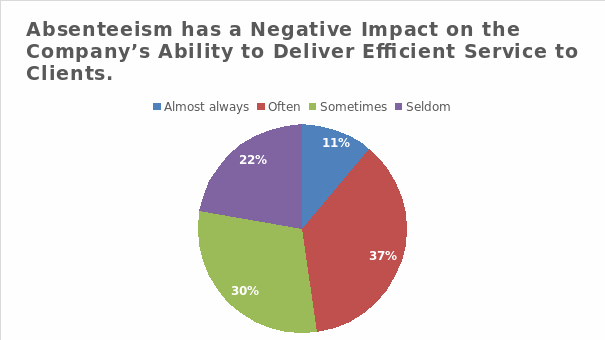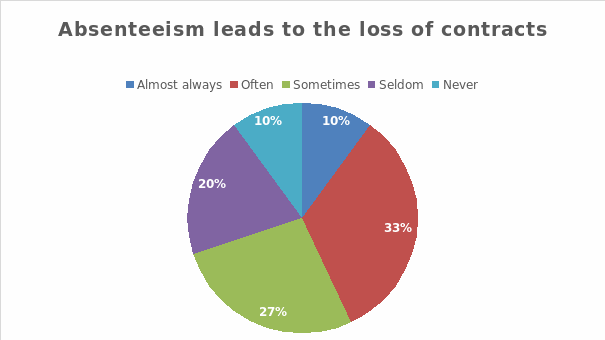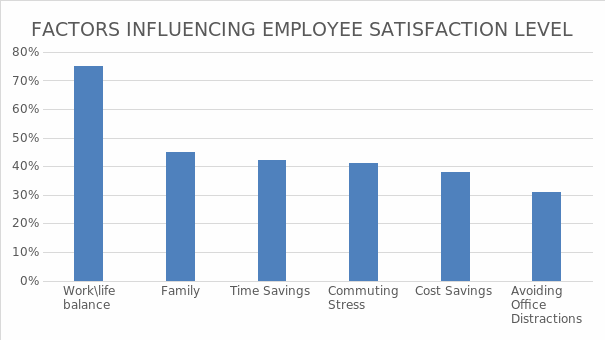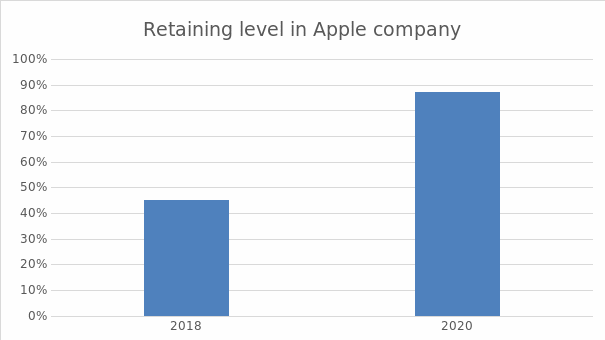Absenteeism affects any kind of activity, be it a business, an organization, a corporation, and so on. Absenteeism is one of the reasons why a company’s revenues or the performance of a business/organization may decrease. In business, as in a complex mechanism, each part of the mechanism is important; each department is responsible for performing work, without which the robot of the entire company is impossible. Accordingly, as part of the mechanism, each person in this department is also responsible for operating the whole apparatus, especially if this is a highly qualified team member whose work cannot be performed by another employee.
The level of absenteeism among employees depends on many factors, foreseen and unforeseen circumstances. Among the unforeseen circumstances are the following:
- Illnesses.
- Urgent personal accidents.
- Family-related issues.
The foreseen circumstances include:
- Fatigue.
- Depression.
- Work overload.
- Lack of motivation.
In other words, the foreseen reasons for high absenteeism levels are the reasons related to negative working conditions. An important factor is also the level of retention of the company, the indicators of which affect the level of absenteeism. Thus, a high retention rate contributes to a low absenteeism rate since the employee is happy in his workplace and is happy with everything.
After analyzing the data, one found out that absenteeism affects the ability to provide services to clients. Thereby, 11 % of workers agreed that absenteeism almost always has a negative impact on service delivery, and 37 % think that it occurs often. While some believe that absenteeism only occasionally affects the productivity of the company, most agree on the opposite. The data taken from employees shows the situation from the inside, which helps to conclude that the impact is substantial.

It was also possible to establish that absenteeism affects the level of contracts. Thus, 33% of workers consider absenteeism often to be the reason for the contract loss. In other words, in addition to indirectly affecting the company by worsening the quality of service delivery, this directly impacts the level of income.

In addition, absenteeism negatively affects the overall economic situation, especially in the provision of professional services. The annual cost of lost productivity due to absenteeism is nearly 24,2 billion dollars in the professional occupation sector. Thereby, the consequences of ignoring high absenteeism levels may be following:
- Bad-quality service provision.
- Loss of contracts.
- Decrease of income level.
Strategies used by the companies
An important factor that influences absenteeism is employee satisfaction. It is not surprising that the more comfortable working conditions are provided, the higher the productivity indicators will be. Among the main points that are basic in the context of influencing the level of employee satisfaction are the following:
- Worklife balance.
- Family.
- Ability to save time.
- Commuting stress.
- Ability to save costs.
- Ability to avoid office distractions.

As one might notice, the balance between time spent at work and at home is a major factor. For example, an overworked work schedule, overtime work hours, and additional tasks can lead to stress for employees. In turn, this will affect the level of absenteeism: the employee will be overworked and will not be able to perform the assigned tasks effectively, and he will need time off. For example, some companies have begun to implement strategies to address this problem through a four-day workweek.
It declined the absenteeism level by nearly 30 % by influencing the following factors:
- Employee satisfaction level.
- Dedication to work.
- Decline of stress level.
- Increasing free time level.
All this led to the fact that employees were able to rest and recover before the next work week. Moreover, they have more free time for self-development and for improving their qualifications, which directly improves productivity.
Possible solutions of the problem
There are many strategies for lowering absenteeism, including both reward and improvement strategies. Incentive strategies include the use of cash rewards, bonuses, salary increases. Improvement strategies are tools aimed at improving the working environment for employees. One of these has been engaged by Apple, namely increasing employee retention by improving working conditions. This reduces absenteeism as it affects the stress and workload of employees.
This approach influenced not only the overall performance of the company but also certain indicators:
- Customer importance consideration level increased as workers become more dedicated to their jobs.
- Efficiency level being increased as employers are more productive.
- Employee satisfaction level increased because of good work conditions.
- The quality of service provided level increased because of better efficiency level.
- Cost-effectiveness indicators are higher due to all factors mentioned above.

Thus, based on the reasons and studies of applicable ways to reduce absenteeism, there are five possible solutions to this problem:
- The increase of the retaining level.
- Improvement of working conditions.
- Motivational strategies (monetary rewards, sustain the development of the employee).
- Attention to personal factors of the employee.
- Flexible schedule and the possibility to remote work.
References
Abend, L. (2021). Spain is going to trial a 4-day work week. Could the idea go mainstream post-pandemic?. Time. Web.
Archana, K. (Ed.). (2018). Cases on quality initiatives for organizational longevity. Igi Global.
Folger, J. (2021). The causes and cost of absenteeism. Investopedia. Web.
HR Analytics Live. (2019). HR Analytics for Reducing Absenteeism at Work. Web.
Markovic, I. (2021). This is how Apple improved their employee retention rate by 28 per cent. Edume. Web.
Riba, M.B., Parikh, S. V., & Greden, J. F. (2019). Mental health in the workplace: Strategies and tools to optimize outcomes. Springer.
SHRM. (2021). Managing for employee retention. Web.
Singh, T., & Chetty, A. (2016). An investigation into the impact of absenteeism on the organisational performance of a private security company in Durban, Kwazulu-Natal. Singaporean Journal of Business and Economics, 4(11), 105-151.
